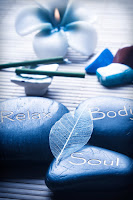I sometimes get asked what is Indian Head Massage. I learned Traditional Indian Head Massage, so if you visit me I’ll assume you’re asking for a seated massage, rather than a couch massage. I know this varies with therapists, so it may be worth checking with the therapist or on their website what their Indian Head Massage involves. It’s not that one therapist is doing it ‘right’ and another ‘wrong’, it’s just different ways. If you’d prefer a couch massage with me, I’d recommend an holistic or aromatherapy massage.
A traditional Indian Head Massage is considered less intrusive as it takes place with you fully clothed. I know some of my clients do want deeper shoulder work though, so we have a chat about if you’d prefer a towel and some oil or if you’d prefer the massage through your clothes.
The first session, regardless of what therapy you choose, will always involve a consultation. I need to know what medication you’re on, your health history and any other factors I need to consider for the massage. Don’t worry, as this is completely confidential and purely for your safety.
During the consultation we also have a chat about using items such as a candle and incense. These are part of a traditional session, as they remove stagnant energy and encourage the flow of fresh energy. For some people though, they have breathing considerations which may make these unsuitable or you may not actually like the aroma, or find incense smoke too strong. And that’s fine – we just won’t use them.
An Indian Head Massage doesn’t actually include just the head; it actually involves a massage on the back, the arms, shoulders, neck, face and head. This means it’s a great choice if you have neck and shoulder problems. Pressure can be varied depending on what you prefer and you should find it relaxing.
During the session you will also find different areas are worked with circles anti-clockwise and then clockwise. This is specifically working marma points, which are designed to help balance your energy and can be found all over your body. During an Indian Head Massage I work marma points on the hands, upper chest, chin and head.
 Near the end of the session I also carry out a chakra balance. This is also to help balance your energy further and the chakra points are worked down the centre of your body. Each point corresponds to a different colour and a different aspect of your life. For example, the throat chakra is blue and is (unsurprisingly) linked to communication. The chakra balance may be carried out by keeping the hands on or off the body. Personally I tend to keep one hand on your head, while I work through the other chakra points.
Near the end of the session I also carry out a chakra balance. This is also to help balance your energy further and the chakra points are worked down the centre of your body. Each point corresponds to a different colour and a different aspect of your life. For example, the throat chakra is blue and is (unsurprisingly) linked to communication. The chakra balance may be carried out by keeping the hands on or off the body. Personally I tend to keep one hand on your head, while I work through the other chakra points.
You’ll then know we’re approaching the end of the session as I finish with a final gentle massage before placing my hands on your shoulders and head.
After a session I’ll offer you some water, as it’s a good way to make sure you’re back in the room with me. The session is designed to help you physically, emotionally and spiritually – you only ever get what you need from a session and your body will use the Indian Head Massage in whatever way it want.
Indian Head Massage can vary from therapist (as with all therapies) so it can be worth checking out their website or contacting them for further information if you want to check specific points.
 Louise is an holistic therapist who owns Therapy Centre, Bristol BS14 9HB, a clinic offering a range of holistic and beauty therapies. Louise offers reflexology, aromatherapy, holistic massage, Indian head massage, reiki, baby massage and story massage. She is a mum of two boys and when she is not working she enjoys getting outdoors with her family.
Louise is an holistic therapist who owns Therapy Centre, Bristol BS14 9HB, a clinic offering a range of holistic and beauty therapies. Louise offers reflexology, aromatherapy, holistic massage, Indian head massage, reiki, baby massage and story massage. She is a mum of two boys and when she is not working she enjoys getting outdoors with her family.
For further information about Louise, louise-morgan.co.uk. The therapy centre website is kinsaletherapycentre.co.uk, and the contact number is 01275 217160

